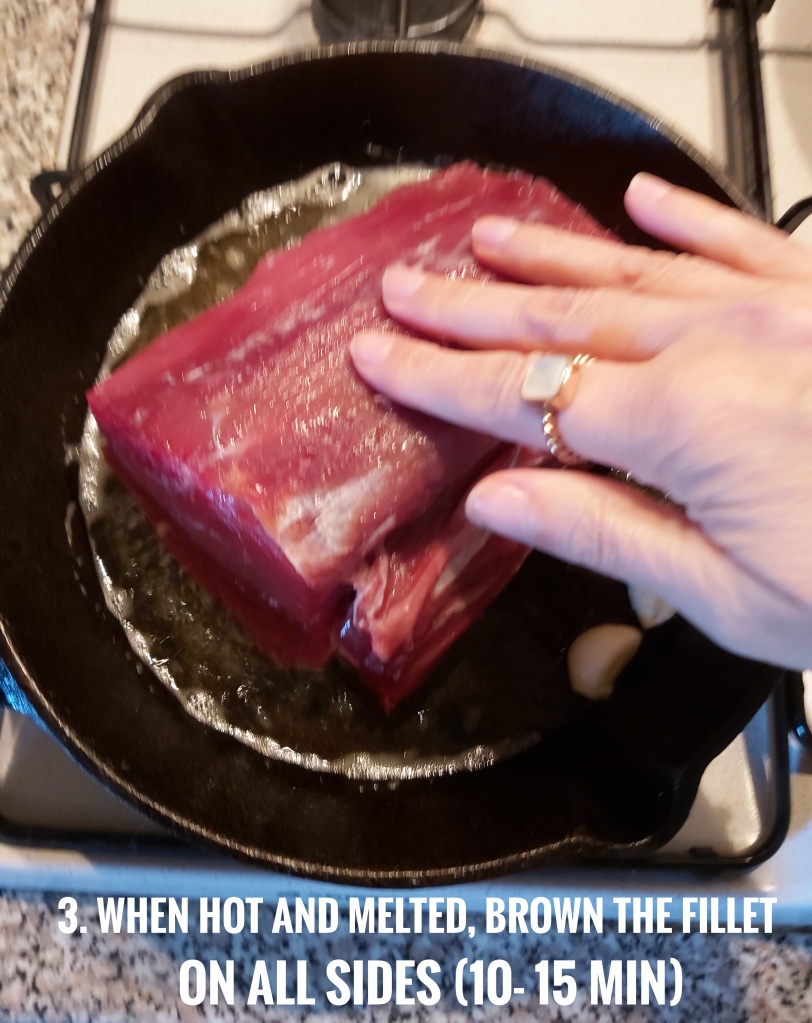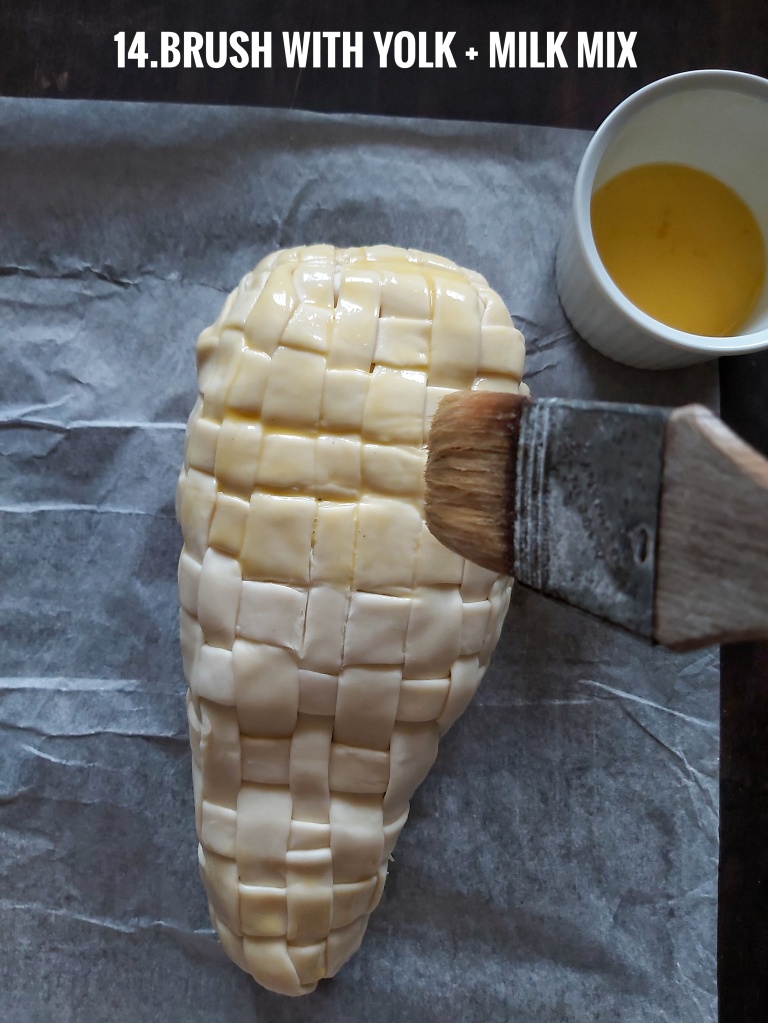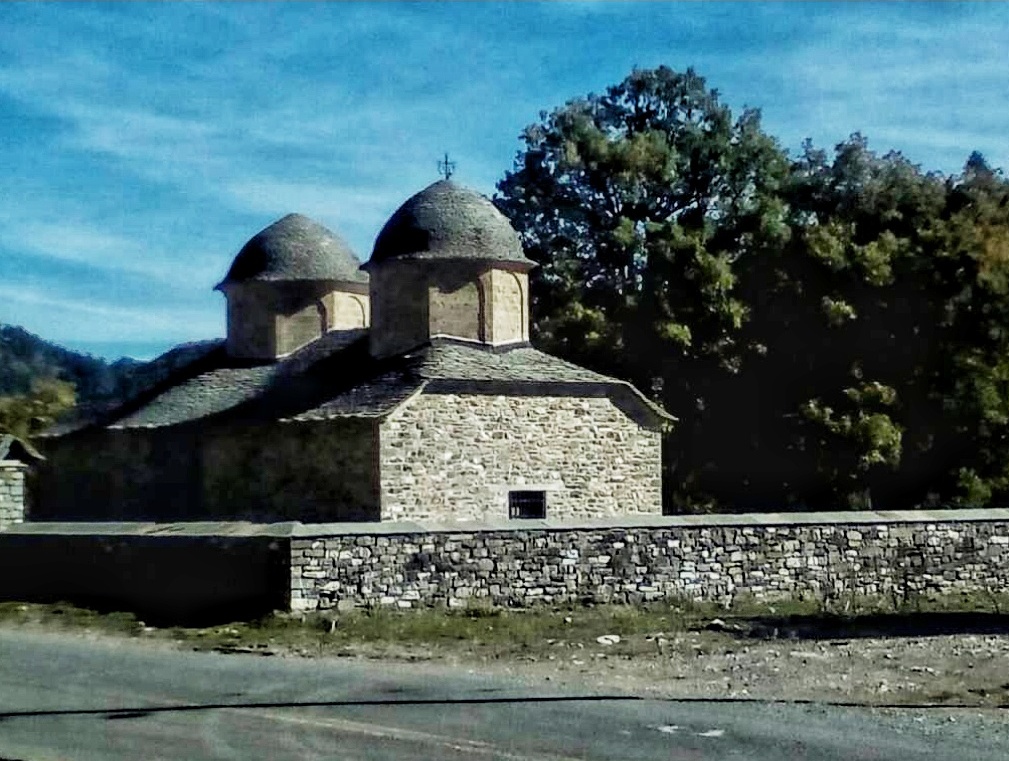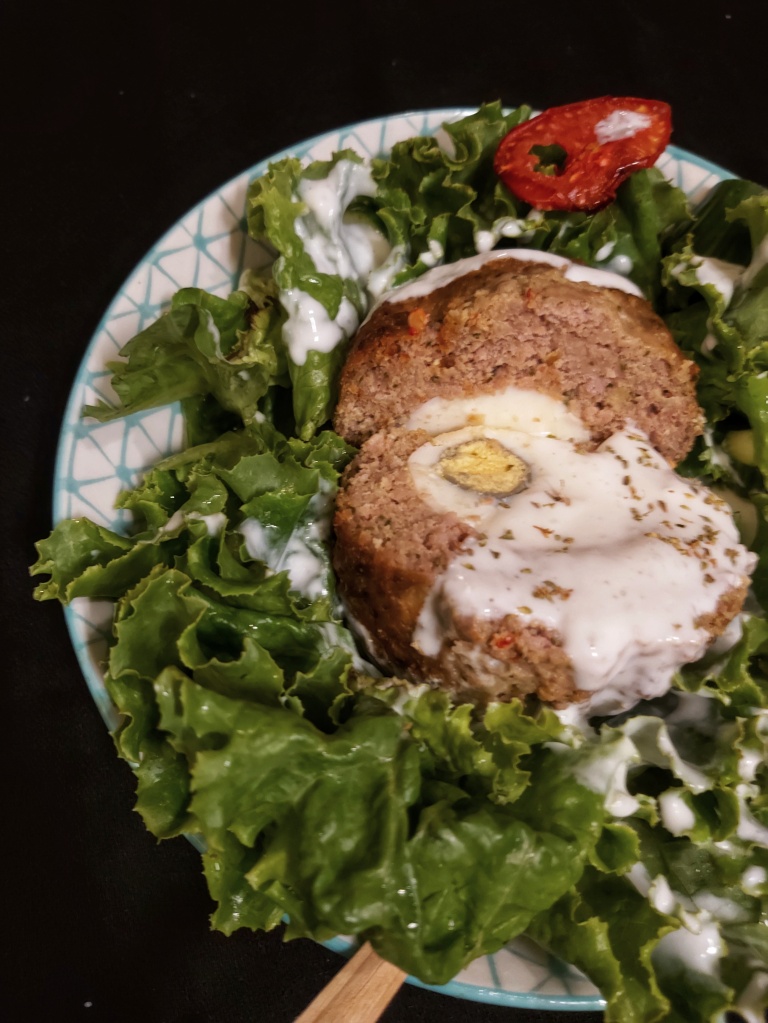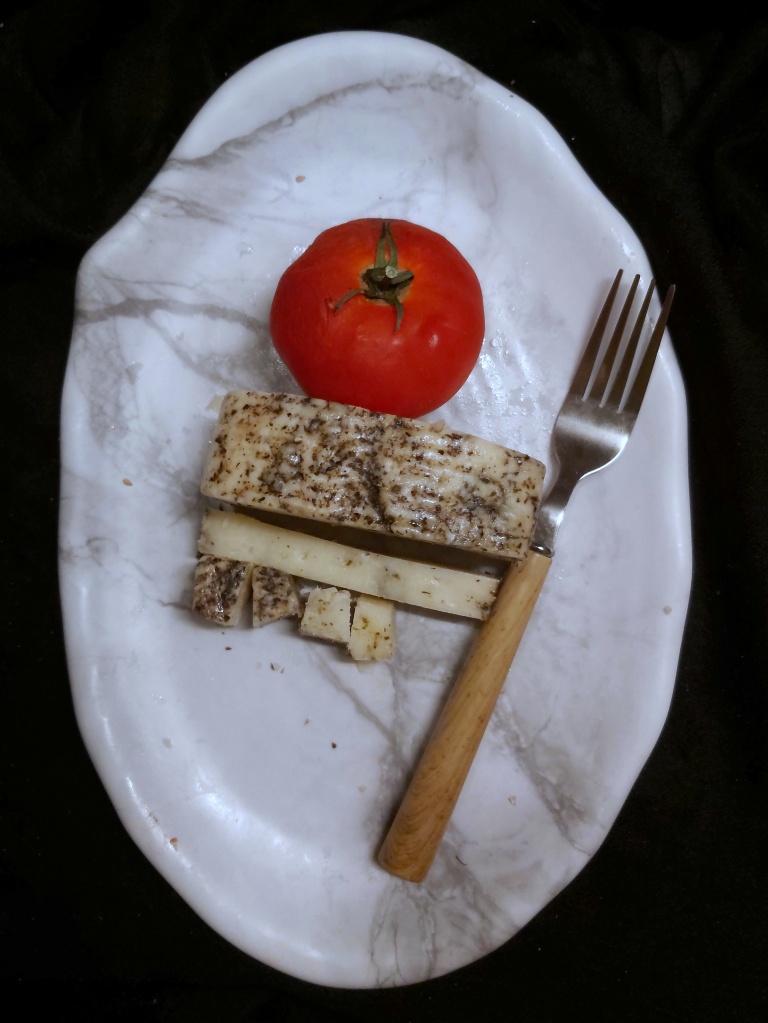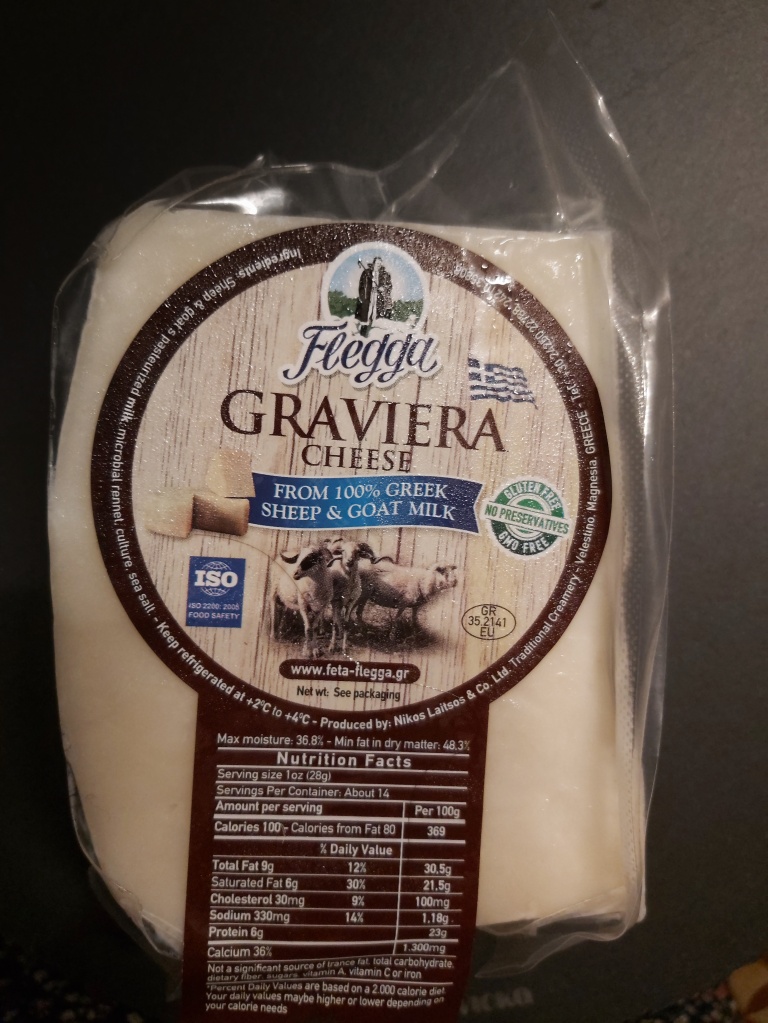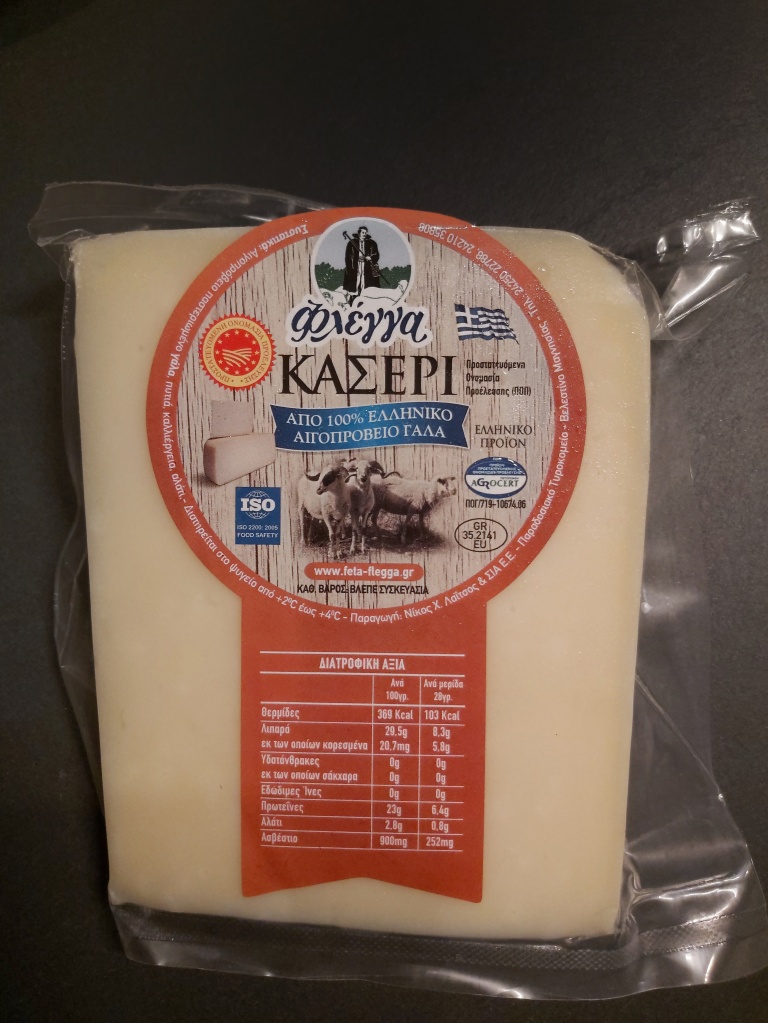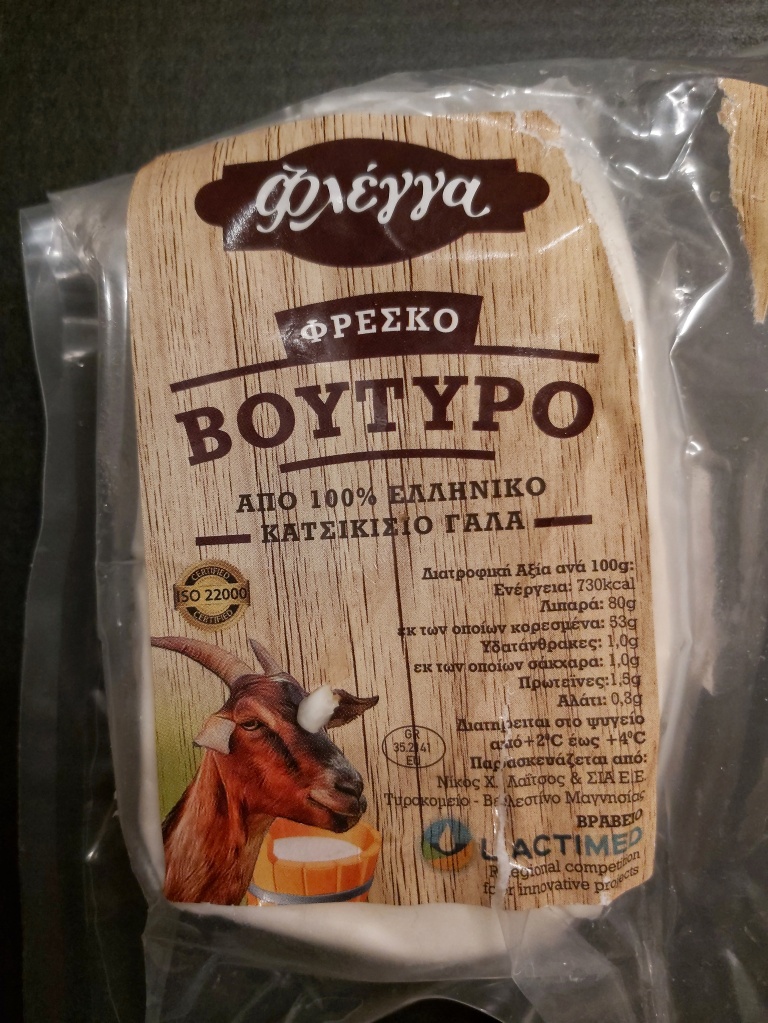Christmas Ideas. Part 2. Beef fillet in crust, speck & mushrooms
Very similar to the previous recipe but with beef fillet, speck and mushrooms. Everything is wrapped and cooked inside a "nest" of puff pastry. Speck is a type of lightly smoked and aged ham (prosciutto) rubbed/massaged with a mix of spices like juniper, bay leaves etc. This spiced cure gives speck a deeper taste that's more intense than prosciutto crudo. It's typically made in South Tyrol and gives a unique flavor especially when paired with mushrooms which with their intense aromas makes you feel a virtual journey into a mountain chalet. Enjoy!



Ingredients : 800 gr fillet of beef , 300 gr mushrooms, 2 carrots, 200 gr thinly sliced speck, 1 rectangular puff pastry, 1 yolk / 2 tbs milk , 50 gr butter, 2 cloves of garlic, oil, salt
Method:
Turn on the oven at 180 ° C / 356 °F
1.Massage the beef fillet with salt. Let it rest for 10 min.
2.In a pan heat 50 g of butter.
3. When it is melted and hot, brown the fillet on all sides for 10 – 15 min
4. Cut the carrot into small pieces. In a large pan heat the oil with the garlic. Add mushrooms and carrot and cook for 15 minutes until they are very dry and withered ( They must not have moisture. Humidity would damage the pastry)
5. Roll out the puff pastry (without removing its baking paper)
6.Cover the pastry with the speck
7.Cover completely with a generous layer of mushrooms
8.Position above the fillet steak
9.Close the dough around the meat by pulling up the baking paper.
10.Make the dough adhere (with your hands and a fork) well.
11.Transfer the fillet to the pan, brush with the yolk and milk mix.
12. With a knife cut the surface creating a grid. (Follow the photo gallery)
Bake for 45 min at 180 ° C Remove from the oven, let it rest for 15 – 20 minutes, cut it into slices.
Serve with polenta or mashed potatoes
Polenta: For this recipe has been used “instant” polenta Valsugana typical of northen Italy. Cooking takes only 8 min. As an alternative to polenta, the fillet can be served – and is delicious too – with mashed potatoes.
POLENTA. For 2 persons: 180 gr instant polenta, 900 ml water. Bring the water to boil. Add polenta and a pinch of salt. With a whisk mix costantly to prevent lumps formation. Cook on low heat for 8 min.
Serve hot with a fillet slice on top.


See the step by step gallery below

Ideas for Christmas. Part 1. Turkey leg in crust

This crusted turkey recipe also called “Wellington” is the ideal alternative to the usual Christmas roast. The wrapping of puff pastry is usual in Christmas recipes; symbolizes the swaddling clothes of the infant Jesus. In fact, it is very often used to prepare them right in the Christmas period.

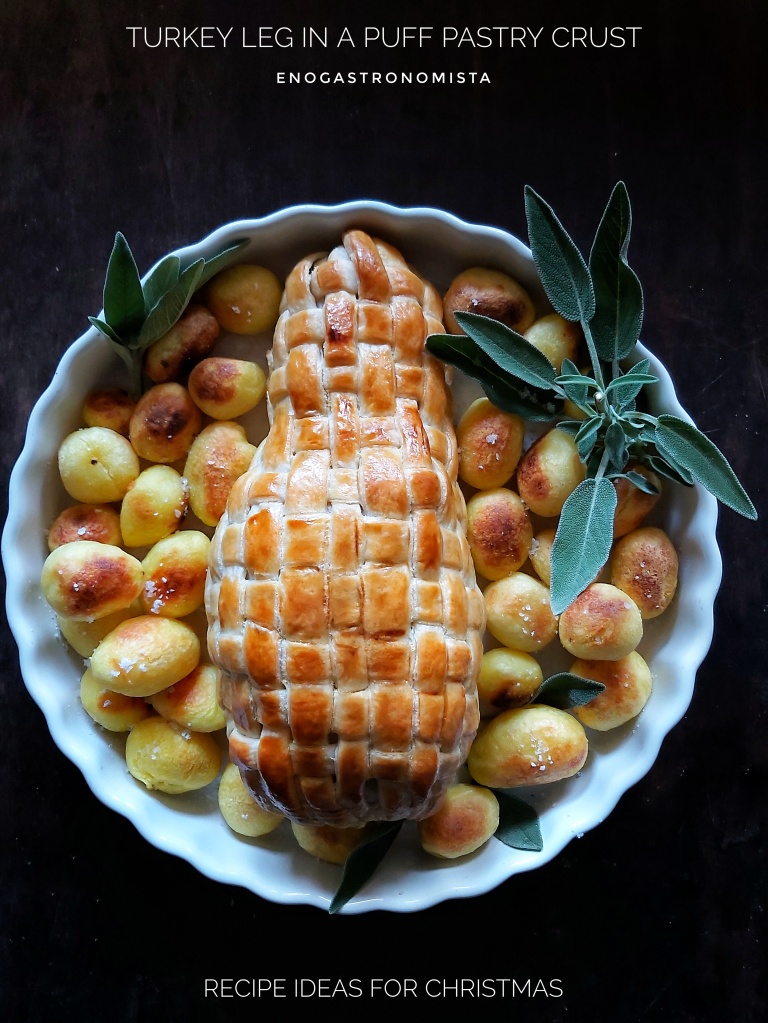

Ingredients (for 2 persons):
1 turkey leg ~ boneless~ (800 gr) – 60 ml extra virgin olive oil – 300 ml white wine – 2 cloves of garlic – 2- 3 sage leaves – Salt 2 pinches
2 rolls of puff pastry
1 yolk + 2 tablespoons of milk
Method: Preheat the oven 180°C / 392° F
1. In a pan or in a large pot, heat the oil, add the garlic and the sage leaves.
2. Add the turkey leg. Brown it evenly on both sides for 10 min
3. Add the white wine and the salt.
Cover with a lid. Cook over low heat for 45 min
4. Check the cooking with a long skewer stick. When the turkey is ready, a clear/ transparent and diaphanous liquid will come out. (Pink liquid means it’s still raw in depth)
When it’s ready, remove it from the heat, let it cool completely and dry the meat well with kitchen paper
5. Coat the turkey (cold and dried) with the whole pastry
6. Pierce with a fork on both sides to prevent the pastry from swelling during cooking
7. Cut the second sheet into strips and form the classic grid for tarts. (Photo gallery below)
8. Coat the turkey with the pastry grid, sealing the edges tightly at the back side of the leg.
9. Brush the pastry with 1 beaten egg yolk together with 2 tablespoons of milk 10.
Bake in a preheated oven at 200 ° C for 20 – 25 min until the pastry is golden. Serve with roasted baby potatoes.
Recommended wine: In general, a medium-bodied red wine is the pergect choice, especially if you space between Barbera and Merlot, two different worlds but both perfectly matched to baked turkey.

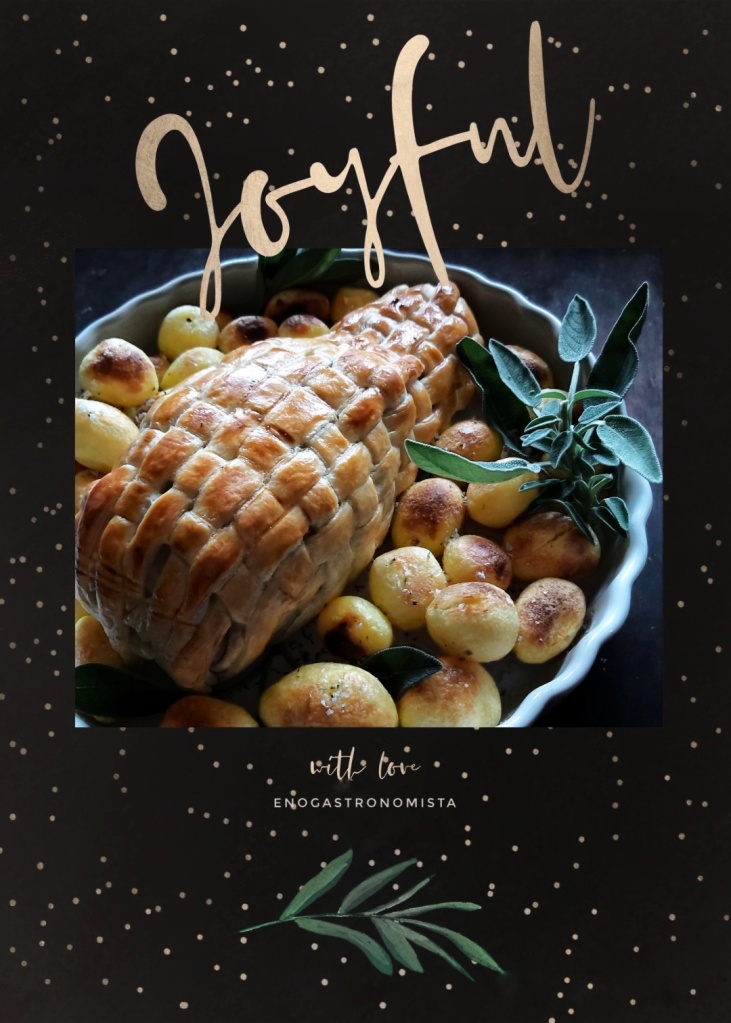
History & nowadays tradition of Greek Cheeses


The science of transforming milk into a solid substance is a very ancient procedure since the time of ancient Greece.
Homer (Όμηρος) in the Odyssey 6th century BC describes in detail the shepherd and cheesemaker Cyclop Polyphemus and gives descriptions of the cheeses that matured in his cave and were made from sheep’s, goat’s milk & sea salt
What we now call ” FETA ” was known to the ancient Greeks, since its preparation is mentioned many times in the Odyssey .
Polyphemus at first transferred the milk, he collected from his flock to “bags” made of animal skins, finding – to his great surprise – that after a few days the milk turned into a solid, acidic and preservable mass. After this discovery he experimented with various combinations, each time having different types of cheeses.
Still others are soft and less salty such as odiern “Anthotiro” and “Manouri” and were kept in its cave in straw baskets.
Anthotyro (Aνθότυρο): white cheese produced from sheep’s and goat’s milk. Its name means the flower of the cheese, a name that justifies its name as it conveys strong
smells of freshness
Myzithra (Μυζήθρα) is a fresh cheese made with milk and whey from sheep or goats, or both. The cheese is soft, snow-white, creamy, and moist. Since no salt is added to mizithra it has an almost sweet and milky taste and may be eaten or, often, baked in pies.
Manouri (Μανούρι): a type of myzithra type cheese, which is rich in fat. It comes from the ancient adjective manos (cheese), meaning sparse, soft cheese
It is distinguished due to its sweet and mild taste and aroma, having been characterized by the National Dairy Committee of Greece as “the most exceptional traditional Greek whey cheese
Xinotyri (Ξινοτύρι): The roots of this traditional cheese are lost in time. It is a spreadable cheese that is produced by mixing sheep’s and goat’s milk, and has a pleasant, slightly sour taste

Feta ( Φέτα): the first reference to feta is made in a Byzantine poem where it is referred to as ” πρόσφατος” “recent”. This is considered to be its Byzantine name. The name feta dates from the time of Venetian rule in Greece, in the 17th century, and derives its etymological origin from the Latin word “fette”. Probably the word refers to the practice of cutting the cheese into slices to be inserted into the barrels
Kaseri ( Κασέρι): cheese-making became quite popular during the Turkish occupation in Greece (15century) , due to the lack of plenty of meat. Then, we came up with the name of a well-known type of cheese, kaseri; it seems to come from the Turkish word kaşer, which in turn comes from the Latin caseus = cheese. From the same root comes the cheese in English and the “käse” in German

Graviera (Γραβιέρα): is a hard cheese, made mainly from sheep’s and goat’s milk.
It is one of the best known Greek cheeses after feta and has been produced for centuries with the traditional method. The cheese is round in shape and has a compact and elastic mass of light yellow color. Its complete maturation time is at least three months
Graviera cheese received a certification of protected destination of origin (a PDO) in 1996. In other words, cheeses that are called Graviera but made in countries other than some regions of Greece are not the real deal and have no right to use the name.
Below we present some of these ancient cheeses, produced by the Greek award-winning “Flegga” dairy company.

Since 1957 all these traditional products are made from 100% organic goat and sheep milk, no GMO, no gluten, no chemicals, no preservatives and yes to ISO food safety. ( The standard ISO 22000 is based on the HACCP principles defined by the Codex Alimentarius)
We will never be tired of repeating the benefits of goat and sheep milk against cow’s milk.
As opposed to cow’s milk which contains the allergenic protein “A1 casein” (a highly inflammatory protein for the human body), goat’s milk contains A2 casein, that makes it – protein wise – the closest milk to human breast milk, hypoallergenic and tolerated even by babies
So for this Christmas, in the coming days we will propose some ideas using these precious products in a simple, easy and genuine way.

My big fat Greek baklava
Baklava is a rich, sweet pastry popular in Middle Eastern countries made of layers of phyllo filled with chopped nuts and sweetened and held together with syrup or honey.
Baklava is normally prepared in large pans. Many layers of filo dough, separated with melted butter are laid in the pan. A layer of chopped nuts—typically walnuts,pistachios or almonds is placed on top, then more layers of phyllo. Most recipes have multiple layers of phyllo and nuts, though some have only top and bottom pastry.
Greek version of baklava is made with 33 dough layers, referring to the years of Christ’s life.

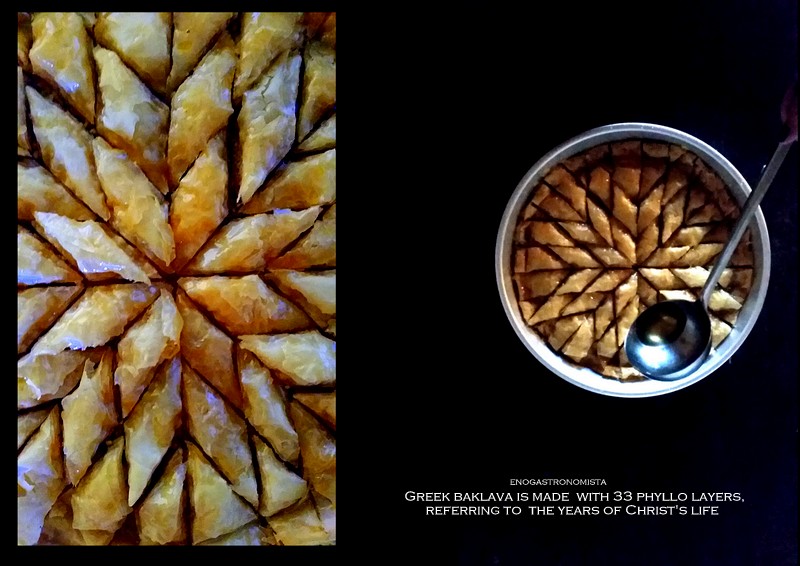

How to cut it in diamond shape (4 steps)
 Repeat the same procedure for all quarters
Repeat the same procedure for all quarters
Ingredients
- 1 package phyllo dough
- 300 gr chopped nuts
- 200gr chopped almonds
- 300 gr butter (My choice is always the Greek award winning dairy products of “Flegga” Company. This specific butter gives not only a delicious fragrance but another dimension of taste to all dishes, sweets and savoury)
- 1 teaspoon ground cinnamon
- 1/2 teaspoon clove powder
- 1/2 teaspoon nut
Ingredients or the syrup:
2 cup water
2 cup white sugar
1 orange peel
2 cinnamon sticks
1 cup honey
Method:
- Preheat oven to 160° C. In a bowl, melt the butter .
- Butter the bottoms and sides of a 33×23 pan.
- Process the nuts until in small, even sized pieces. Combine with cinnamon, nutmeg and cloves powder. Set aside. Unroll phyllo dough.Place a sheet of phyllo dough into the pan. Using a pastry brush, brush the phyllo sheet with melted butter. Repeat more times until you have 10 sheets layered.Sprinkle 2 – 3 tablespoons of nut/almond mixture on top. Top with two sheets of dough, butter, nuts, layering as you go.Continue to repeat the nut/almond mixture and two buttered sheets of phyllo until the nut mixture is all used up. The top layer should be about 10 sheets deep. With a cuisine scissors cut out all edges of phyllo.
- Using a sharp knife cut into diamond or square shapes all the way to the bottom of the pan. Bake baklava for about 1 hour until the top is golden brown and crisp and the lower phyllo layers beneath the nut/almond mixture are thoroughly baked through. To test this, use a knife to lift up a corner of one of the pastry rectangles from the center of the pan so you can peek at the bottom layers . If the top starts to get too brown before the pastry is cooked through, lay a piece of foil over the top.
- .While baking, make the syrup.Boil sugar and water until sugar is melted. Add orange peel, cinnamon sticks and honey. Simmer for about 15 minutes.
- Remove baklava from oven and immediately spoon syrup it . Serve at room temperature.
Roast leg of lamb with mint sauce / Ψητο αρνισιο μπουτακι γαλακτος με γλυκοξινη σαλτσα δυοσμου


Ingredients for the sauce :
- 1 bunch mint (chopped) 2 kg quality leg of lamb, salt
- 200 ml white wine vinegar
- 200 ml extra virgin olive oil
- 6 tbs brown sugar
Method: In a large bowl mix together all ingredients for the sauce ( chopped mint, vinegar, olive oil . brown sugar) Stir to combine.
Score the leg with a knife. With a pastry brush, rub part of the mint mixture all over the leg. Sprinkle all over with salt. Refrigerate for 1 hour to marinate.
Preheat oven to 200°C / 400°F . Roast for 1 hour – 1 h &15 min for a mediun rare.
Serve with the mint sauce and a fresh Merlot wine.




